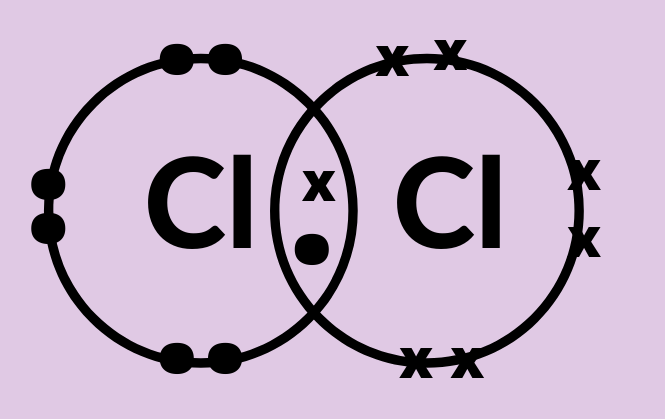
In electron dot structure, the valence shell electrons are represented by crosses or dots.
(a) The atomic number of chlorine is 17. Write its electronic configuration.
(b) Draw the electron dot structure of a chlorine molecule.
Answer
435k+ views
Hint: In the given question firstly we have to define what exactly is the chlorine and then we can give the proper definition and the characteristics of it. Although we can say that we know that the main points among the following is that it should have a total of 17 electrons in its neutral state.
Complete step by step answer:
Copper and correct explanation of the chlorine and the different characteristics of the element both physical and chemical.
Chlorine is the chemical element with the chemical symbol as Cl and the atomic number as 17. It is also the second-lightest of the halogens and also appears between fluorine and bromine in the periodic table. Therefore we can say that its properties are mostly intermediate between them. Chlorine is a yellow-green gas at room temperature. It is an extremely reactive element and a strong oxidising agent: among the elements, it has the highest electron affinity and the third-highest electronegativity on the Pauling scale, behind only oxygen and fluorine.
(a) Electronic configuration of chlorine: 2.8,7
(b) Electron dot structure of chlorine molecule is given below:

Note: The most common compound of chlorine, sodium chloride, has been known since ancient times; archaeologists have found evidence that rock salt was used as early as 3000 BC and brine as early as 6000 BC. Its importance in food was very well known in classical antiquity.
Complete step by step answer:
Copper and correct explanation of the chlorine and the different characteristics of the element both physical and chemical.
Chlorine is the chemical element with the chemical symbol as Cl and the atomic number as 17. It is also the second-lightest of the halogens and also appears between fluorine and bromine in the periodic table. Therefore we can say that its properties are mostly intermediate between them. Chlorine is a yellow-green gas at room temperature. It is an extremely reactive element and a strong oxidising agent: among the elements, it has the highest electron affinity and the third-highest electronegativity on the Pauling scale, behind only oxygen and fluorine.
(a) Electronic configuration of chlorine: 2.8,7
(b) Electron dot structure of chlorine molecule is given below:

Note: The most common compound of chlorine, sodium chloride, has been known since ancient times; archaeologists have found evidence that rock salt was used as early as 3000 BC and brine as early as 6000 BC. Its importance in food was very well known in classical antiquity.
Recently Updated Pages
Master Class 10 Computer Science: Engaging Questions & Answers for Success

Master Class 10 Maths: Engaging Questions & Answers for Success

Master Class 10 English: Engaging Questions & Answers for Success

Master Class 10 General Knowledge: Engaging Questions & Answers for Success

Master Class 10 Science: Engaging Questions & Answers for Success

Master Class 10 Social Science: Engaging Questions & Answers for Success

Trending doubts
State and prove Bernoullis theorem class 11 physics CBSE

Raindrops are spherical because of A Gravitational class 11 physics CBSE

What are Quantum numbers Explain the quantum number class 11 chemistry CBSE

Write the differences between monocot plants and dicot class 11 biology CBSE

Why is steel more elastic than rubber class 11 physics CBSE

Explain why a There is no atmosphere on the moon b class 11 physics CBSE




